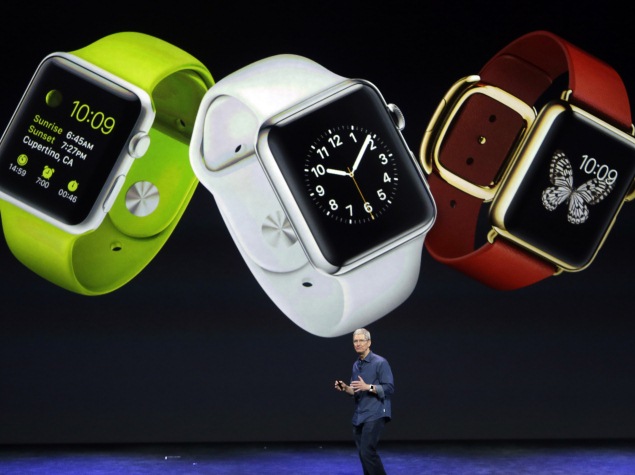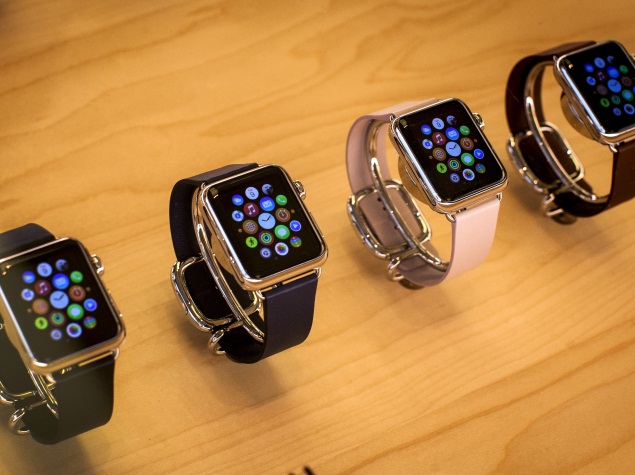If you’re curious about Apple’s latest offering, this is what you need to know:
1. Its name – although the rumour mill had made up its mind that the watch will be called the iWatch, Apple has gone for the somewhat uncreative but highly functional name – Watch.
2. There are three collections of designs available for the Apple Watch. First, you have the Watch, which features materials like stainless steel and leather in the design, the Watch Sport, which uses lightweight anodised and is designed to be used more actively, and the Watch Edition, which is housed in a gold body. This last is likely to be more expensive than the other designs.
3. Across the three collections, there are a total of 18 different styles of straps available, which means that you will be able to customise the Apple Watch – both physically and in terms of software, to stand out from others, but Apple hasn’t given out details on the pricing of different designs yet.
4. The Apple Watch home screen looks familiar, but different from the iOS screens we’re used to. Here, the app icons are all shaped like round bubbles, and the screen are called neighbourhoods. You pan across the “neighbourhood” with swipes, and then zoom in until you can easily tap on the icon using the crown – which Apple is calling the Digital Crown. This is an innovative solution to the problem of navigation in a smartwatch, that doesn’t rely only on voice control.
(Also see: iPhone 6 and iPhone 6 Plus Available in India October 17; Price Unknown)
5. It has a touchscreen, but you won’t need to keep touching the screen. On a small watch face, standard touchscreen gestures are hard to use, and instead, the Apple Watch comes with a crown on the side, of the kind that you have in traditional watches to adjust the time with. Here, however, you use it to do things like scrolling up and down a list, or zooming in and out of a map. At the same time, you can still touch the screen if you need to.
6. You can talk to your watch. Much like the Google Android Wear watches, the Watch can also be operated using voice commands. Pushing the crown activates Siri, although Indian users at least might prefer Google for this functionality – Siri has been fairly bad at recognising what some members of the team are saying, while Google voice recognition has been much more accurate.
7. You’ll get feedback as vibrations. The Apple Watch doesn’t just talk back – instead Apple is going to use different types of vibrations to reinforce its messages. What this means is that one type of vibration could mean turn left, and another type of vibration could mean turn right. Apple claims that this allows navigation without looking at the screen.
8. Apple hasn’t given any details about battery life yet either. Charging the Watch is done with a MagSafe cable connected to the back of the body, which sounds a lot simpler than most of the other smartwatches in the market, which still use complicated cradles to charge the watch. It’s likely that the watch will need to be charged every night, which isn’t really great but at least it’s relatively easy to actually charge.
9. You need an iPhone to use the Apple Watch. This shouldn’t come as a surprise to anyone, but the Apple Watch is dependent on your smartwatch for much its data connection and functionality. It will work with the two year old iPhone 5 onwards. Not surprisingly, it doesn’t support other devices such as Android.
10. It integrates a lot of health and fitness functions. Trackers for heartbeat and activity are built into the watch, and not only will it count your steps and track heartbeat, but it also learns your behaviour and suggests fitness goals. That’s one part of the puzzle, but the iWatch also lets you carry out other functions thanks to third party apps, so you’re going to see apps from Nike and other companies to take advantage of these new sensors as well.
(Also see: Apple Unveils ‘Apple Pay’ Mobile Wallet and Payment System)
11. The Apple Pay functionality will be available on the Watch as well, so you can just tap your wrist instead of pulling out your phone to make a payment. Again, this feature is probably not so useful for readers in India.
12. The Apple Watch starts at $349 – but we don’t know how much the different variants will cost. At that price, the Apple Watch is definitely one of the most expensive smartwatches – the Sony Smartwatch 3 will be going on sale at the end of the year, priced at 230 EUR or around $300. The other smartwatches all fall in a spectrum between this (with the Moto 360 priced at $249.99) and the LG G Watch which just got a $50 price cut down to $179.
13. Left-handed people needn’t worry about whether the Apple Watch will work for them, as Apple has confirmed users will be able set the orientation of the watch’s interface. THe bands are also reversible, ensuring the smartwatch is not faced in the wrong direction. Notably though, the Digital Crown will still be in an inconvenient location – on the bottom left.
From what little we’ve seen of the Apple Watch so far, it’s a good looking device but it’s not the best looking one. What makes it interesting however is how intuitive the interface design appears to be. The use of the crown for controls is an obvious usage that has been crying out for attention but Apple got there first despite being a full year behind the competition. The $349 price tag is really steep though, especially when compared to other devices in this category. With a presumably short battery life (why not disclose it otherwise?) the Apple Watch falls prey to some of the same shortcoming as other smartwatches, an we’re inclined to see this as an early adopter device still, and not something that everyone should rush to get.



